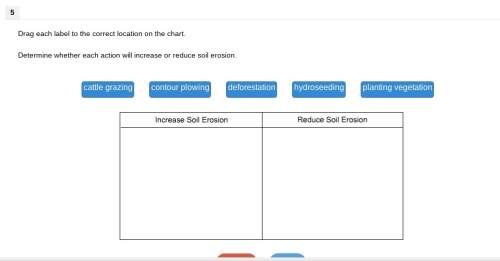
Biology, 02.06.2020 17:59 2020sanchezyiczela
A population of Anolis lizards lives on the mainland. During a storm, three groups of Anolis migrate to three islands, one large, one medium sized and one small Approximately 200 lizards establish on the small island, 2000 on the medium-sized island, and 20,000 on the large island. You may assume that:.
a. the lizards that initially establish on each island are, at first, representative of the mainland population.
b. the islands support these population sizes over time (so 10 generations later there are still just 200 lizards on the small island).
c. Rates of mutation are negligible (i. e. no mutation).
mating is random, and the effective population size is the same as the total population size. I. In the next generation, on which island will genetic drift be strongest?
1. Small island,
2. medium island,
3. large island
Explain: ii. After 10 generations which island would you expect to have the highest heterozygosity?
1. Small island,
2. medium island,
3. large island
Explain: iii. Some Anolis lizards on these islands have a dominant allele L1 that confers an improved ability to leap over allele L2 at the same locus. This difference in leaping ability causes selection to favor the L1L2 or L1L1 genotypes over L2L2 by about s = 0.002. Given this information, and the information above:
1. On the big island, Natural selection will make it more likely that the L2 allele is lost
2. On the big island, Genetic drift will influence the frequency of the L2 allele
3. On the small island, Natural selection will make more likely that the L2 allele will be lost On the small island, Genetic drift will influence the frequency of the L2 allele on the small

Answers: 2


Another question on Biology

Biology, 21.06.2019 16:20
Astructure that is found in a plant cell and not in an animal cell is a ? central vacuole mitochondrion nucleus ribosome
Answers: 1


Biology, 22.06.2019 05:10
Hydrilla (hydrilla verticillata) is an invasive aquatic plant and one of the most serious aquatic pests in florida. hydrilla has already been introduced to hundreds of bodies of water throughout florida, hydrilla is difficult to control because it grows rapidly and survives in many different water depths and conditions. hydrilla • describe how hydrilla affects native plant and animal species. include both a biotic and an abiotic limiting factor. • suggest one biotic and one abiotic recommendation that could slow the spread of hydrilla
Answers: 3

Biology, 22.06.2019 11:00
Match the following terms and definitions. 1. species that are adapted to live in equilibrium at carrying capacity population density 2. population growth that reaches equilibrium and carrying capacity population 3. death rate mortality 4. birth rate k-selected 5. a group of interacting individuals of the same species within the same geographic area natality 6. the number of organisms living in a particular area logistic growth
Answers: 1
You know the right answer?
A population of Anolis lizards lives on the mainland. During a storm, three groups of Anolis migrate...
Questions





Mathematics, 21.06.2021 20:30


Social Studies, 21.06.2021 20:30


Mathematics, 21.06.2021 20:30






English, 21.06.2021 20:30


Physics, 21.06.2021 20:30

Mathematics, 21.06.2021 20:30

History, 21.06.2021 20:30

Mathematics, 21.06.2021 20:30




